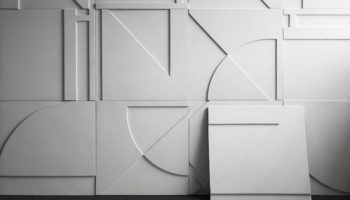Environment’s New Bed is on the Cutting Edge of Sustainability
Seems I forever associate the concept of “Edge” with dangerous escapades, near misses, and literal/metaphorical peril of life and limb (see Razor’s Edge by W. Somerset Maugham and The Edge by Lee Tamahori), so it’s nice to see the concept toned down some—harnessed, as it were, into the domestic sphere of a good night’s sleep: The Edge Bed by Environment Furniture exemplifies wise design and a sustainable ethos. The prodigiously-sized frame is mostly made from 100% reclaimed Brazilian Peroba Rosa, with the tantalizing touch of Mahogany veneer inlays for the corner details. The Edge in The Edge refers to the continuous and copious ledge that skirts the bed’s four sides like a protective embrace, “an extra wide platform that eliminates the need for end tables or a bedside bench.”
Edge Bed. Designed by Environment Furniture.
Clean and Rustic and Backed by the FSC
Beyond the beautiful detailing, the personalized touch of distinctively weathered wood, and the welcome feature of a perpetual place to put all the thingamajigs of the bedtime ritual, The Edge offers the further functional boon of four large sliding drawers to accommodate blankets, pillows, sheets, old-school paper books, etc… But perhaps the true ticket to dreamland is to be found in Environment’s philosophy. The company is dedicated to using (and developing) processes and materials with a minimal ecological impact. Just so, Environment collaborates with organizations like the Tropical Forest Trust in order to pare down the amount of illegal/endangered wood in the product supply chain and encourage the use of wood from FSC certified forests.



If The Edge Bed is a testament to the output of this sustainable ethos, then, aesthetically speaking, we’ve got very little to lose by going green. The gorgeous Peroba Wood is certainly nature’s work of art, each element a “one-of-a-kind board that has been exposed to the natural elements for decades and acquired a truly ‘weathered’ look that no manufactured artificial distressing can replicate.”
Via LATimesBlog.




Leave a Reply